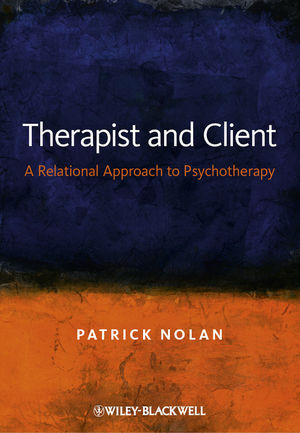Therapist And Client A Relational Approach To Psychotherapy Patrick Nolanauth by Patrick Nolan(auth.) 9780470019535, 9781119943297, 0470019530, 1119943299 instant download after payment.
Therapist and Client: A Relational Approach to Psychotherapyprovides a guide to the fundamental interpersonal elements of the therapeutic relationship that make it the most effective factor in therapy.
- Presents the fundamental interpersonal elements that make the therapeutic relationship the most effective factor in psychotherapy
- Explores and integrates a range of approaches from various schools, from psychoanalysis to body-oriented psychotherapy and humanistic psychotherapies
- Offers clear and practical explanations of the intersubjective aspects of therapy
- Demonstrates the pivotal need to work in the present moment in order to effect change and tailor therapy to the client
- Provides detailed case studies and numerous practical applications of infant research and the unified body-mind perspective increasingly revealed by neuroscience
Content:
Chapter 1 Applying Findings from Infant Research (pages 1–26):
Chapter 2 The Interpersonal Relationship (pages 27–53):
Chapter 3 Potential Space, Creativity and Play (pages 54–85):
Chapter 4 The Intersubjective Experience (pages 86–105):
Chapter 5 The Relational Body–Mind (pages 106–136):
Chapter 6 Working with Trauma and Fragile Clients (pages 137–158):
Chapter 7 Adapting Therapy to the Client: A Relational Approach (pages 159–196):
Chapter 8 Electroencephalography and Quantitative Electroencephalography (pages 86–95):
Chapter 9 Electrodermal Activity and Quantitative Electrodermal Activity (pages 96–115):
Chapter 10 Complex Psychological Diagnosis and Instrumental Psychodiagnostics (pages 116–121):
Chapter 11 Complex Psychological Diagnosis with Quantitative Electroencephalography (pages 123–134):
Chapter 12 Complex Psychological Diagnosis with Quantitative Electrodermal Activity (pages 135–144):
Chapter 13 Sets and Settings when Applying a Neuroscience?based Clinical Methodology (pages 145–151):
Chapter 14 Multimodal Assessment of Family Process and the “Family Strange Situation” (pages 152–155):
Chapter 15 Biofeedback, Neurofeedback, and Psychofeedback (pages 156–170):
Chapter 16 Meditation, Mindfulness, and Biofeedback?based Mindfulness (BBM) (pages 171–179):
Chapter 17 Neurofeedback and Cognitive Therapy (pages 180–188):
Chapter 18 Psychofeedback and Cognitive Therapy (pages 189–193):
Chapter 19 Monitoring the Warning Signs of Relapse in Schizophrenia and Bipolar Disorder, and Coping with Them (pages 194–196):
Chapter 20 Get Started with Neuroscience?based Cognitive Therapy (pages 197–198):


